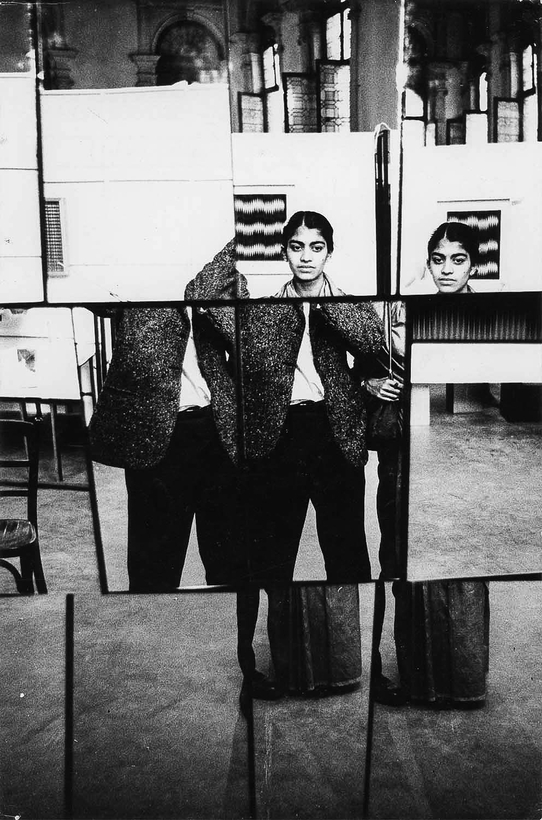Jyoti Bhatt’s love affair with photography began in 1957. The Indian artist, then 23, attended “The Family of Man,” a touring exhibition of humanist photographs curated by Edward Steichen, which had traveled to the city of Ahmedabad, in Gujarat. “I think that inspired me most by showing me what photography can do,” Bhatt tells me in a recent interview. “I had always kept a sketchbook, but with a photograph I could record everything I saw and not just certain details.”

Bhatt, who turns 89 next month, has long been known for his talents as a figurative painter and printmaker. But in recent years it is his black-and-white photography that has become increasingly sought after, with institutions such as the Tate and MoMA acquiring several of his more abstract, experimental pictures. Now his photographs are the subject of a comprehensive retrospective that inaugurates the opening, on February 18, of the Museum of Art & Photography (MAP), in Bengaluru (formerly Bangalore), India.
“Jyoti Bhatt: Time and Time Again” runs until July 23 and features more than 160 photographs as well as contact sheets and archival materials. It charts Bhatt’s photographic journey during the second half of the 20th century, including his documentation of rural communities, portraits of fellow artists, and experiments with multiple exposures and fragmented mirror images.

“There is a lot of repetition within Bhatt’s photographs,” says the exhibition’s curator, Nathaniel Gaskell, referring to the title of the show. “A lot of the motifs that he recorded in his photographs you then find in his sketchbooks, paintings, and prints, especially his motif of the silhouette of a head.”
“I had always kept a sketchbook, but with a photograph I could record everything I saw and not just certain details.”
As a boy growing up in Bhavnagar, in western Gujarat, Bhatt fell under the spell of Gandhian philosophy. “Gandhi had said that real India was not in the cities but in the villages,” he explains. “So I had that kind of feeling from childhood.” From 1967 to 1995, Bhatt used his camera to chronicle the folk arts and indigenous practices of rural India, be it the intricate floral patterns of a rangoli—a traditional floor design made with ground rice—in the courtyard of a house in Rajasthan, or a painstaking mandana, one of the oldest forms of decorative tribal art in India.

“I started noticing that indigenous artists were using a visual language that was understood by common people,” Bhatt says. “I became interested in folk art because I wanted to see if I could adopt some of that visual language, which was simpler for common people to understand.”
For more than 50 years Bhatt was married to the eminent ceramist Jyotsna Bhatt, who died in 2020 at the age of 80. Both husband and wife taught art for many years at the Maharaja Sayajirao University of Baroda. “Jyoti was never a jobbing photographer,” Gaskell says. “He didn’t have to make a living from it.”

Instead, he was intent on following his own idiosyncratic path. “Because of my training in painting, I would wait for a shot to arrange itself,” Bhatt says. “I learned from reading about [Henri] Cartier-Bresson that I should be very aware of those arrangements and click the camera before those things changed.”
Bhatt admits that his newfound fame as a photographer, as opposed to as a painter and printmaker, has rather taken him by surprise. He is not even sure if the attention is an entirely good thing. “I hope that my photographer friends will remain my friends,” he says mirthfully. “It was much better when I was not a photographer. Over the last year, I haven’t heard much from my photographer friends.” —Tobias Grey
“Jyoti Bhatt: Time and Time Again” opens on February 18 at the new Museum of Art & Photography, in Bengaluru, India
Tobias Grey is a Gloucestershire, U.K.–based writer and critic, focused on art, film, and books


 Discover
Discover